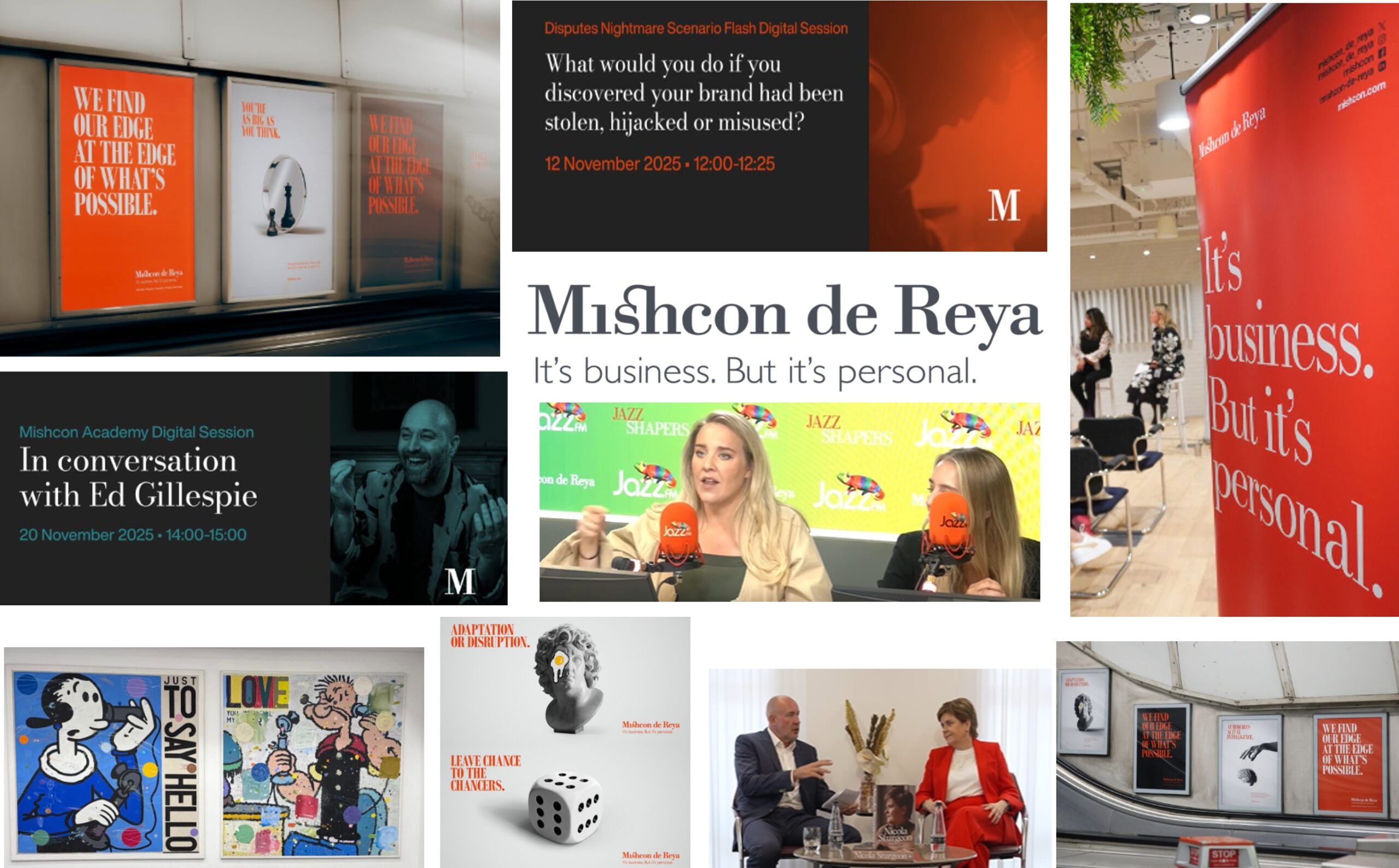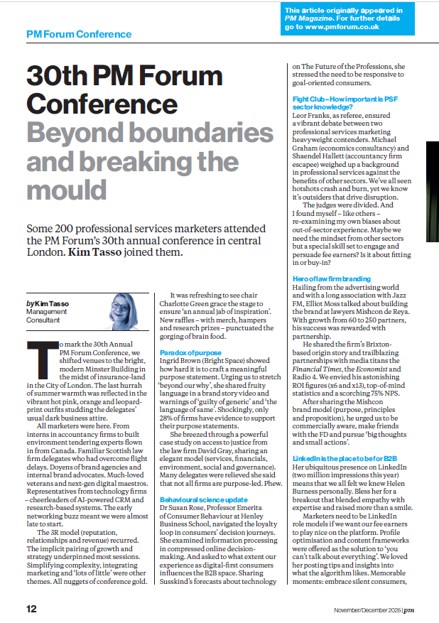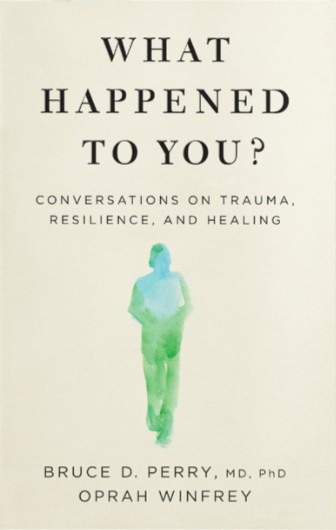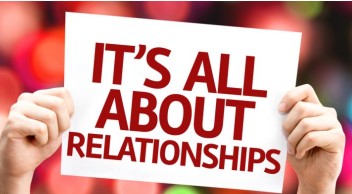
From the offices of our hosts (Thank you firm Boodle Hatfield!) we looked out at the iconic building (nicknames including The Vase, The Boomerang and The Beer Gut). Marketers from law, accountancy, engineering and property firms joined a PM Forum workshop to share ideas on how to improve our writing. We covered a lot in a short time including grammar, audience analysis, persuasion and editing. Considering communities, channels, content and conversion (the 4Cs). At the end, each delegate chose his or her favourite learning point: Hooks, Headlines and Hard-Wired Words: 11 ideas for better writing
-
Hooks and Headlines
Use hooks to capture people’s attention. And compel them to read more. Draw them in.
One hook we considered was curiosity. Create a curiosity gap. What is curiosity and why is it important in business relationships? (Video) (kimtasso.com).
Hooks appear in headlines. Writers often spend the lion’s share of their time on headlines. Newspapers live or die by them. Digital marketers will tell you that the first two words are the most important.
-
Structure
We looked at different structures to add variety and interest. For example: Problem and solution. Chronology. Theory and practice. Question and answer. Simple to complex. General to specific.
And then SCRAP, SOAP and the 5Ps.
We also considered story structures. From Freytag’s pyramid and seven basic story plots to Pixar’s, Storybrand and Underdog.
-
Pace
Vary the length of sentences. Just read this paragraph by Gary Provost (100 ways to improve your writing, 1985).
“This sentence has five words. Here are five more words. Five-word sentences are fine. But several together become monotonous. Listen to what is happening. The writing is getting boring. The sound of it drones. It’s like a stuck record. The ear demands some variety.
Now listen. I vary the sentence length, and I create music. Music. The writing sings. It has a pleasant rhythm, a lilt, a harmony. I use short sentences. And I use sentences of medium length. And sometimes when I am certain the reader is rested, I will engage him with a sentence of considerable length, a sentence that burns with energy and builds with all the impetus of a crescendo, the roll of the drums, the crash of the cymbals – sounds that say listen to this, it is important”.
-
Show, don’t tell
I can’t put this any better than Russian novelist Anton Chekhov: “Don’t Tell Me the Moon Is Shining; Show Me the Glint of Light on Broken Glass”
We examined the use of metaphors and similes. Two illustrations:
Top marks to McGuire Woods lawyers for this article Abandoned Mines and Data Retention Policies: Time to Clear the Explosives Out of the Shed | Password Protected (passwordprotectedlaw.com)
This struck me – written beautifully by a corporate lawyer: “As any networker would confess, a withering look from a sought-after business contact can feel like a stab in the heart and make self-doubt resurface like worms on a rainy day” Book review – Great networking by Alisa Grafton (kimtasso.com)
There are resources on storytelling:
Video – The art of storytelling – Kim Tasso explains and demonstrates
selling legal services with storytelling (kimtasso.com)
Storytelling book reviews: The Story Advantage and The Story Factor (kimtasso.com)
-
Emotions, power and hard-wired words
“Don’t ever diminish the power of words. Words move hearts and hearts move limbs.” Hamza Yusuf (American Islamic scholar).
Seek lists of power or hard-wired words on the Internet. Use positive rather than negative words. Unless you’re using fear rather than greed as your motivator.
“Conneotation” describes the emotions or feelings associated with a word. Blue is a colour, but it is also used to describe a feeling of sadness. Perhaps use a tool like the Word Emotion Lexicon produced by Dr. Saif M. Mohammad (Senior Research Scientist, National Research Council Canada). He used crowdsourcing to consider which of eight basic emotions are linked to each English word.
-
Easy to read
The Flesch formula calculates how easy it is to read your prose. It’s built into many content management systems (CMS). The rule is – short words, short sentences, short paragraphs.
I know that some of you will want to know how this post scores. I used AUTOMATIC READABILITY CHECKER, a Free Readability Formula Consensus Calculator (readabilityformulas.com). The answer is Grade Level: 7 Reading Level: standard / average. Reader’s Age: 11-13 yrs. old (Sixth and Seventh graders).
As a psychologist and therapist this quote from an American pastor is worth sharing too: “Be careful what you say. You can say something hurtful in ten seconds, but ten years later, the wounds are still there.” Joel Osteen.
-
Persuasion
We considered lots of material on persuasion.
We started with the three pillars of persuasion from Aristotle – logos (rational), ethos (credibility) and pathos (emotion).
Then the six principles of persuasion from Cialdini’s “Influence: The psychology of persuasion”. There’s a short video at the start of this explainer article: Influence – Cialdini’s six principles of the psychology of persuasion (kimtasso.com)
And we considered some nuggets from books such as:
Small changes that spark big influence (persuasion science) (kimtasso.com) “The small big – small changes that spark big influence” by Steve J Martin, Noah J Goldstein and Robert B Cialdini
Book review – Persuasion: The art of influencing people by James Borg (kimtasso.com)
Book review – Peter Frederick’s “Persuasive writing” (kimtasso.com)
Book review of Hypnotic writing by Joe Vitale (kimtasso.com)
One tip I gleaned from the marvellous B2B copywriter Carole Seawert – use the word you wish to emphasise at the sentence end. This leverages the recency effect. Other cognitive biases were considered Book review: Nudge: Improving decisions about health, wealth (kimtasso.com).
-
Tone
Tone of voice is the stuff of super brands. Consider the work of one of the leaders in tone of voice at Innocent Drinks: Dan Germain.
Follow Innocent Drinks (@Innocent) on Twitter for a daily dose of smiles.
-
Power of three
Messaging. Know what you want to achieve with your writing. Watch a short video on the power of three or read the script. Power of three – Writing and presentation basics (Video) (kimtasso.com)
-
Make the reader feel smart
Audience is paramount. So I’m glad that all the material on empathy with the audience hit home.
I shared the advice of Peter Frederick (author of “Persuasive writing – how to harness the power of words”) – Book review – Peter Frederick’s “Persuasive writing” (kimtasso.com) – who said “Your audience is an ignorant genius” – as intelligent as you but without knowledge of the subject.
And it links to the idea of curiosity mentioned above. It’s called reader discovery. And it’s beautifully explained here How to Make Your Readers Feel Smart (jessicabrody.com).
-
Ways to overcome Writer’s Block
We shared our writing processes.
If stuck, sometimes I’ll continue my research and gather more information on the topic.
Maybe I’ll do a mind map or a spider diagram – engaging the visual and more creative side of my brain.
Sometimes I step away from the screen (and keyboard). I pick up one of my favourite pens. I select some fine paper or a beautiful notebook. I find a quiet spot to sit in. Preferably with a view. And then I put that pen on the paper.
Alternatively, I’ll walk briskly down the street and test my powers of observation to become entirely absorbed in my surroundings. Then I’ll let my brain wander back to the writing task. And note any thoughts on my smartphone.
Still not convinced about the power of writing?
“The written word will flourish in the post-pandemic workplace”
Our multimedia metaverse – where video and podcasts rule – often throws shade on the written word.
But never forget the impact of beautifully written prose.
A research programme from Google into the ingredients of successful technology projects found that teams with high-quality documentation deliver software faster and more reliably.
And an article in The Economist in January 2022 Remote work and the importance of writing | The Economist shared this thought for internal communications:
“Writing is not always the best way to communicate in the workplace. Video is more memorable; a phone call is quicker; even PowerPoint has its place. But for the structured thought it demands, and the ease with which it can be shared and edited, the written word is made for remote work”.
Scientific evidence on the impact of great writing
Still not convinced?
In an article from Harvard Business Review in Summer 2021 on Science of great writing The Science of Strong Business Writing (hbr.org) there was significant neuroscience evidence of the impact of writing on the reader’s brain.
P.S. The power of the Post Script
In certain types of business communication, postscripts are commonly used to make a final persuasive pitch or offer an additional incentive to a potential customer. Writing rules!









